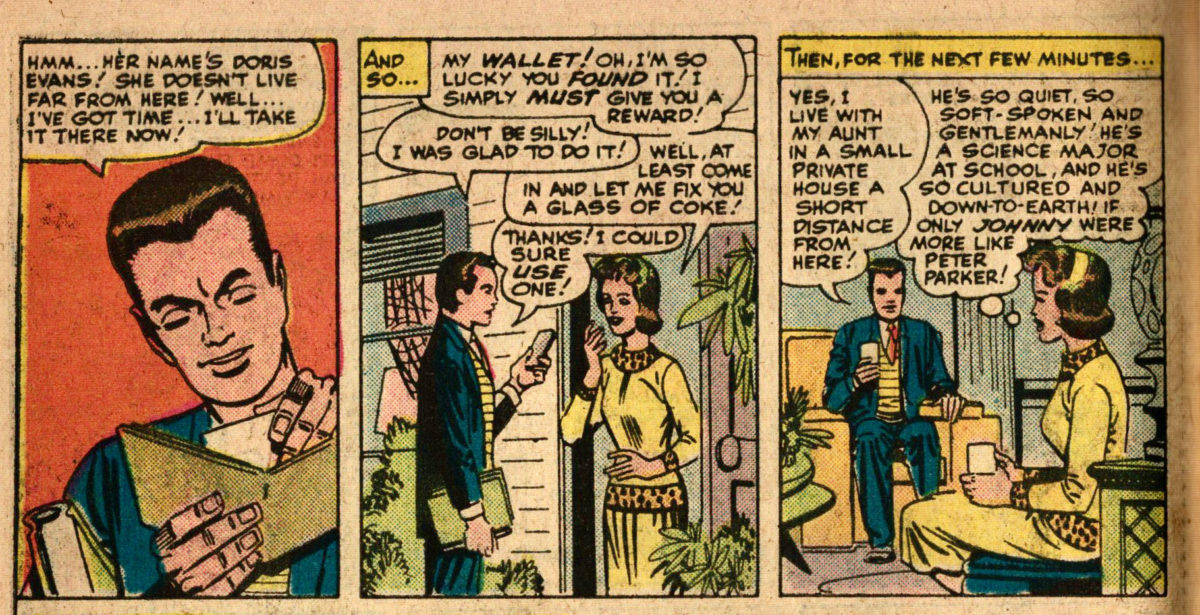Featuring: Hulk
Release: December 2, 1965
Cover: March 1966
12 cents
Script by: Stan Lee
Layouts by: Jack Kirby
Pencilling + inking by: Johnny Romita!
Lettering by: Sam Rosen
10 pages
| Previous | #487 | Next |
|---|---|---|
| Tales to Astonish #77 | Reading order | Tales to Astonish #78 |
| Tales to Astonish #77 | Tales to Astonish | Tales to Astonish #78 |
Why shouldn’t I tell? It’s time the world learned the truth…!

That’s a damn compelling cover, a collaboration between Kirby and Romita, with the Romita influence coming in heavy, but a unique look for the Hulk that is very distinctive compared to either man’s style. Dramatically, we shockingly hear Rick Jones tell an officer (presumably Talbot) Hulk’s secret. We’ll see how that plays out.
John Romita took over as the regular artist on Daredevil last month. He’s just filling in here, as the series has floundered without a regular artist for the last 10 months. Bill Everett will be taking over next issue. We also saw Romita filling in on last month’s Captain America
As we noted in our recent Daredevil post, John Romita just recently passed away in June 2023 at the age of 93. One of the greatest comic artists of all time.

It is a compelling title. “Bruce Banner is the Hulk!” Is this the issue where his secret identity is finally revealed? Secret identities have been revealed on occasion before, but the learner of the identity usually develops amnesia or dies.
Recall from last issue the army built Banner’s T-Gun without knowing what it did. They hit Hulk with it and now everybody assumes Hulk is dead. In fact, Hulk has been transported to the future.
Continue reading “Tales to Astonish #77, Story B”






























